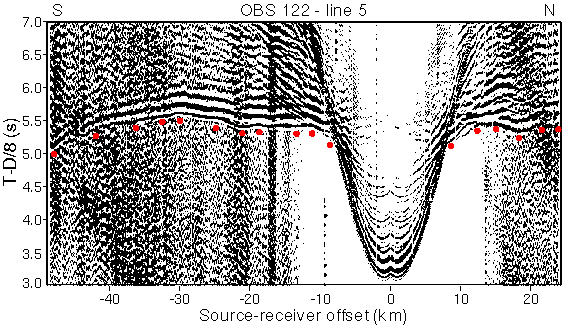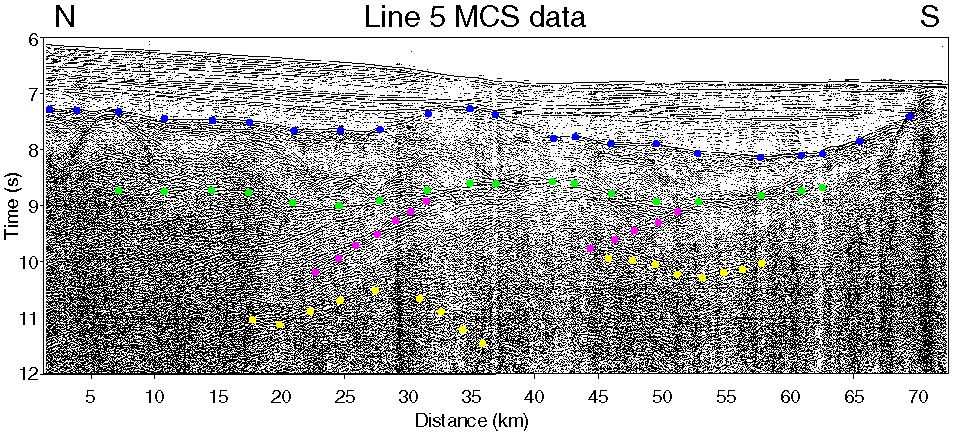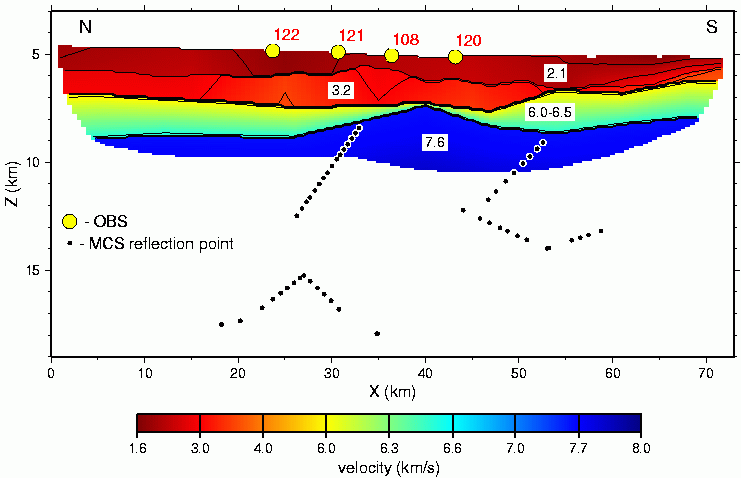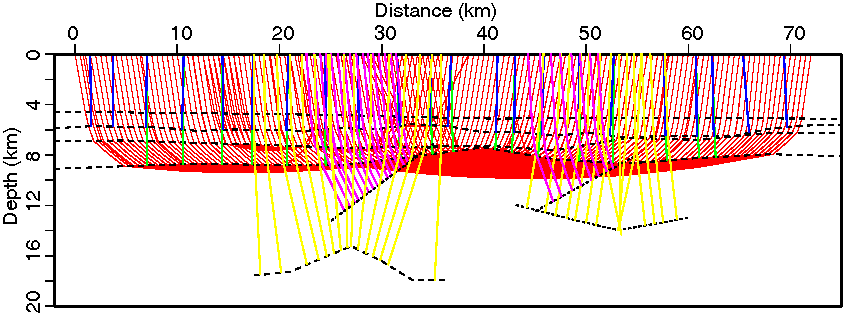

Fig. 6. Example of OBS data recorded along line 5. First arrivals indicated by red dots. Data reduced using 8 km/s and trace normalized.

Fig. 7. Unmigrated MCS data for line 5. Colored dots indicate reflectors that were picked and inverted jointly with the wide-angle data (Fig. 9). The horizontal scale corresponds to that used for the velocity model plots in Figs. 8 and 9.

Fig. 8. Velocity model for line 5 obtained by inverting about 500 traveltimes from 4 OBS/OBHs and the MCS data. Velocities in the crust and upper mantle are indicated in the model. Reflection points from the MCS data that were inverted using floating reflectors are indicated. Unconstrained regions of the model have been omitted (Fig. 9).

Fig. 9. Raypaths through the line 5 velocity model. Raypaths correspond to the data picked from the wide-angle and MCS data used in the traveltime inversion, thus illustrating the true ray coverage of the model. Red paths are refractions and other raypaths correspond to the picks from the MCS data shown in Fig. 7. About 500 arrivals from 4 OBS/OBHs and the MCS data were inverted.